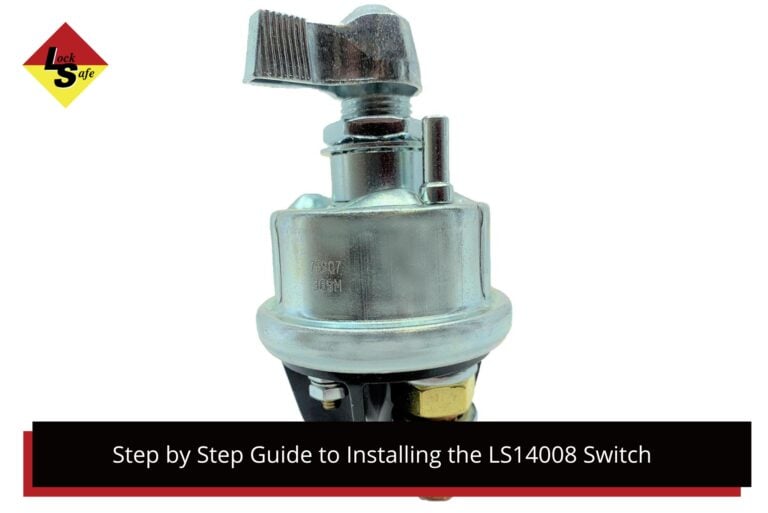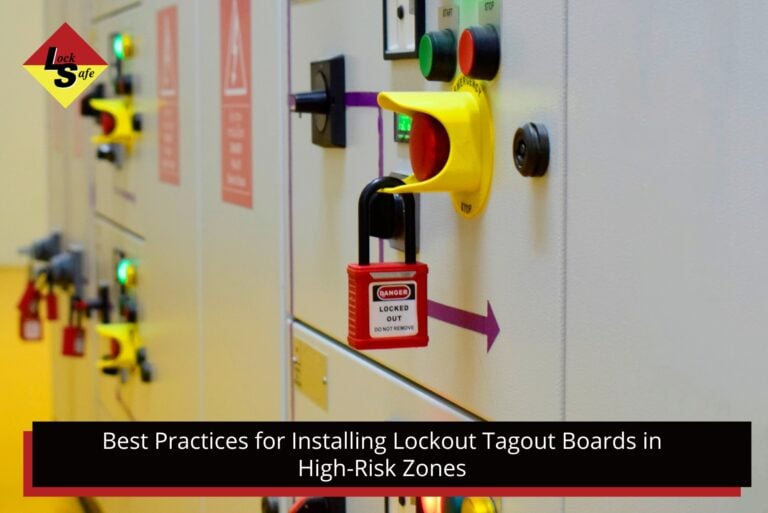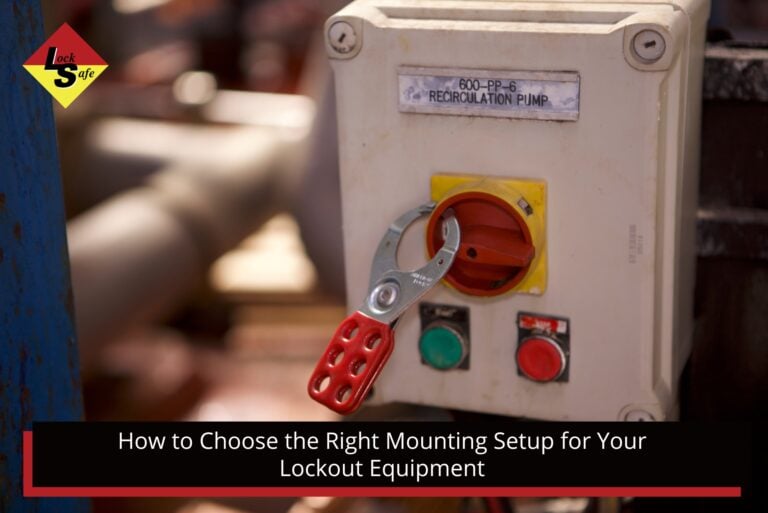Lockout Tagout (LOTO) is a required safety process for controlling electrical energy during maintenance, testing, or repairs. It reduces the risk of electric shock, arc flash, and unintentional equipment start-up by ensuring all energy sources are isolated and secured.
Electrical systems carry significant risk if accessed while energised. These hazards are not always visible, and relying on basic shutdown procedures is not sufficient. Injuries often occur when isolation steps are skipped or devices are removed too early.
LOTO applies to equipment such as switchboards, control panels, HVAC units, and production lines. It is required by WHS regulations and must be followed whenever workers interact with systems where electrical energy may be present.
This article outlines the correct LOTO procedure, equipment standards, and training responsibilities. It is intended for workplaces seeking to reduce risk and meet compliance requirements for electrical isolation.

Step-by-Step Electrical Lockout Process
The LOTO process includes seven clear steps that must be followed in order. Each step ensures the system remains safely isolated while work is performed:
- Identify all sources of electrical and stored energy
- Shut down the equipment using standard stop controls
- Isolate energy at the source using disconnects or breakers
- Apply a lock and tag to each isolation point
- Confirm zero energy using a test instrument
- Begin the task only after successful verification
- Remove locks only when the task is complete, tools are cleared, and all workers are accounted for
This process must be followed by every authorised worker. The same lock must stay in place until the person who applied it is finished.
Worker Training and Role Responsibilities
LOTO requires training before anyone applies a device or works on an isolated system. The training must include all essential tasks from energy source identification to removal of devices after work.
Each person must understand their responsibility, especially in group work environments. Supervisors must check that locks are used correctly and remain in place throughout the job. Contractors must follow the same lockout rules as site staff.
No worker should remove another person’s lock or assume that isolation has been completed. Locks and tags must only be removed by the worker who applied them. If that person is not available, a formal removal procedure must be followed under supervision.
Lockout Devices for Electrical Systems
LOTO devices for electrical systems must be non-conductive, durable, and resistant to tampering. Each device should be assigned to a single worker and used only on approved isolation points.
Common equipment includes:
- Nylon padlocks with unique keys and visible IDs
- Hasps for group lockout situations
- Tags showing the worker’s name, contact, and task
- Lockout kits with full sets of devices stored in a visible location
All devices should meet Australian safety standards. Avoid shared locks, improvised devices, or handwritten notes in place of proper tags. These reduce clarity and increase risk.

Review and Audit of LOTO Procedures
Workplaces must audit their LOTO system regularly to ensure it reflects current risks and work practices. The audit should check that isolation steps match the equipment on site and that workers are using the correct devices.
Audits must cover:
- Condition and suitability of lockout equipment
- Accuracy of documented procedures
- Worker training records and competency checks
- Reports of non-compliance or device misuse
- Updates after equipment modification or process changes
WHS regulators may ask for audit records during site inspections. Keeping this process updated helps prevent legal penalties and ensures safe working conditions.
LOTO Equipment Supplied by Locksafe
We provide a range of lockout devices designed for electrical isolation in industrial environments. All equipment complies with WHS requirements and is suitable for regular use.
Available products include:
- Non-conductive padlocks with key control
- Lockout stations with clear device organisation
- Group lockout hasps and heavy-duty tags
- Full electrical lockout kits for service teams
Each product is selected to reduce risk, improve visibility, and keep isolation secure. We also assist businesses with reviewing current procedures and upgrading to compliant lockout setups.
Maintain Safe Electrical Work with LOTO
Lockout Tagout is a legal requirement when performing work on or near electrical systems. It prevents unintentional energisation and protects workers from electric shock, arc flash, or equipment movement.
WHS regulations require LOTO to be applied before any service, testing, or maintenance begins. This includes isolating all energy sources, using approved lockout devices, and verifying that the system is de-energised.
When applied correctly, LOTO reduces incidents related to electrical contact and supports workplace compliance. It also helps ensure that procedures are consistent across teams, especially during shutdowns or multi-person tasks.
Sites that fail to implement LOTO may face enforcement actions, penalties, or stop-work orders. These risks apply whether the task is routine or time-sensitive.
LOTO must be used every time electrical equipment is accessed. This applies to control panels, circuit breakers, machinery, and any system with stored or live energy. Safe work procedures require full isolation before any task begins.
Contact Locksafe for Lockout Tagout Support
Locksafe provides compliant equipment for electrical isolation, including padlocks, tags, hasps, and lockout kits built for industrial use.
If your site needs to update procedures, replace damaged gear, or meet WHS requirements, our team can assist with product selection and system review.
Contact us to discuss your Lockout Tagout setup or request specific product details.













